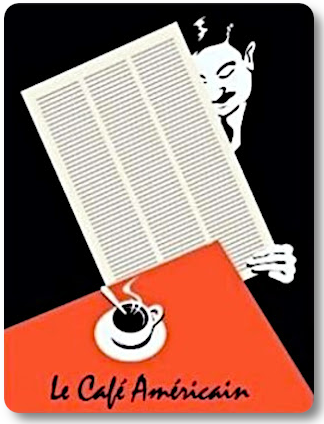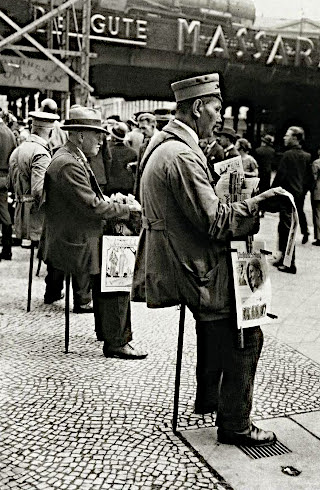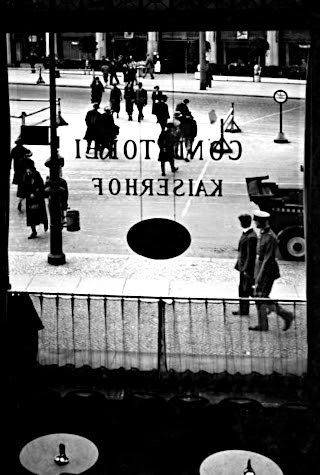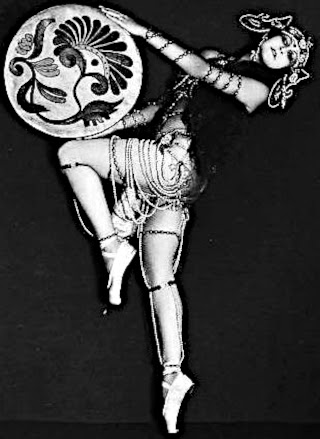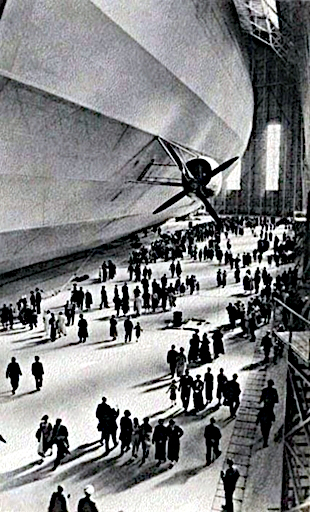The purpose of monetary and fiscal stimulus in economics is similar to the use of anesthesia and antiseptics during an important surgical procedure to correct some systemic difficulty, some disease, some serious problem in a patient. They enable the procedure, help the patient get through it without excessive pain and death from infection or systemic shock.
To apply stimulus and the other monetization programs which the Treasury and the Fed and the Congress and the system of global trade settlements are now doing without enacting sigificant and serious systemic reform to correct the underlying problems, the disease itself, is like taking a patient with a life threatening condition, applying large amounts of anesthetic and antibiotics and antiseptics to keep them stable and quiet, but then refusing to perform the operation to correct the life threatening condition.
Because in this case the disease that is infecting the patient and consuming their life has bribed the physicians and hospital administrators and nurses to leave it alone. It wants to maintain the status quo as long as is possible.
The pulse of patient, their blood flow, is the dollar. And the dollar is laboring under serious difficulties. The disease is consuming it, and the Fed is adding clear plasma to replace it, but is unable to add vitality, the white and red blood cells. They cannot create life, only sustain its appearance.
The liquidationists, by the way, would simply take the patient off all medications, and see how well he can fight the disease while running on a treadmill, hoping his body can cure and correct itself on its own. If the patient is not too sick, this has worked in the past. But if the problem is systemic, if the disease is advanced, then the patient is likely to go critical and sustain a stroke, and a major loss of functionality, even death. Benign neglect might work, it might not. Sometimes the cure is worse than the disease when applied without a perceptive diagnosis.
The Obama Administration (the doctors) and the Congress of both parties (the hospital administrators) and banks (the hospital owners) and the mercantilist trade system most notably China and Japan (the medical suppliers) are failing to deal with the problems of the US economy at hand, merely applying the anesthetic and antiseptics, for which they are being paid handsomely as the hospital bills run higher and higher.
This may be the last bubble, the one that takes the patient to a hospice for long term care in a zombie like condition, or worse, to the morgue. It is the last bubble, malpractice of the highest order, the mother of all policy errors. Nothing is inevitable here except selective default most likely through inflation.
The banks must be restrained, and the financial system reformed, and balance restored to the economy before there can be any sustained recovery.
Associated Press
Third-Quarter U.S. Growth Revised Lower
November 24, 2009
WASHINGTON (AP) — The economy grew at a 2.8 percent pace last quarter, as the recovery got off to a slower start than first thought.
The government’s new reading on gross domestic product was not as energetic as the 3.5 percent growth rate for the July-September period estimated just a month ago.
The main factors behind the downgrade: consumers did not spend as much, commercial construction was weaker and the nation’s trade deficit was more of a drag on growth. Businesses also trimmed more of their stockpiles, another restraining factor.
The new reading on G.D.P., which measures the value of all goods and services produced in the United States — from machinery to manicures — was slightly weaker than the 2.9 percent growth rate economists surveyed by Thomson Reuters had expected.
Still, the good news is that the economy finally started to grow again, after a record four losing quarters. The bad news is that the rebound, now and in the months ahead, probably will be lethargic.
The worst recession since the 1930s is very likely over, but the economy’s return to good health will take time, Fed officials and economists say...
24 November 2009
The Last Bubble
23 November 2009
The US Dollar Is In a Secular Bear Market and Will Remain in One Until...
Contrarians might take some cheer from dollar bearishness, but one needs to be aware that not everything that is fundamental and recognizable is overdone and wrong.
Markets do overrun their trends, especially on the short term and by amateur speculators, setting up very nice opportunities for the professional market makers. The attractiveness of being a 'contrarian' is that when you are right you can set yourself up as superior to those who were wrong, distinguishing yourself from the mere mortals, and feel the euphoria of God's favored hand.
But being a contrarian requires a superior sense of what is real, and what is out of synch with reality. In general few amateurs possess this level of judgement and perspective, and end up just looking silly and eccentric after a few correct calls, taking the opposite position because it is the opposite, proclaiming night to be day, and the moon to be cheese.
Oh they deny it, and keep changing their forecasts, and burying their mistakes, fooling no one really but themselves, constructing ever more intricate theories about why they are right and will be ultimately vindicated in their 'beliefs.' But on the whole they lose money and take a terrific financial beating for being obstinately. Every seasoned trader learns this lesson, at least once, and bears its scars. They become superior traders when they are able to take a position again and hold it, despite the market head fakes, because they are right and they know it.
Markets do fluctuate. This is why it is so important to determine whether a move in a market is a purely 'technical move,' ie a bounce or dip to skin the overleveraged speculators who have piled on to a momentum move, and a genuine and sustainable change in direction underpinned by some fundamental reason.
And this news piece provides an important clue as to when a change in the dollar bear market may begin to occur.
“History tells us the dollar shouldn’t start rising on a sustained basis until 12 months after the Fed starts to lift rates.”The rise in rates will be relative to other currencies and commodities in valuation, but the forecast here is substantially correct. The dollar is in a bear market and will remain there for the foreseeable future. Again, with bounces and dips to tempt the punters in to be fleeced and skinned.
Dollar Slump Persisting as Top Analysts See No Bottom
By Bo Nielsen
Nov. 23 (Bloomberg) -- The most accurate dollar forecasters predict the world’s reserve currency will continue sliding even when the Federal Reserve begins to raise interest rates, which policy makers say is an “extended period” away.
Standard Chartered Plc, Aletti Gestielle SGR, HSBC Holdings Plc and Scotia Capital Inc. say the dollar will depreciate as much as 6.4 percent versus the euro. About $12 trillion of fiscal and monetary stimulus, the world’s lowest borrowing costs and a record $4 trillion of government bond sales between 2009 and 2010 will weigh on the currency, they said. So will the nation’s 10.2 percent unemployment rate and signs that the economic recovery may falter, they said.
“History tells us the dollar shouldn’t start rising on a sustained basis until 12 months after the Fed starts to lift rates,” said Callum Henderson, the Singapore-based global head of foreign-exchange strategy for Standard Chartered.
The best forecaster of the dollar against the euro in the six quarters ended June 30 in Bloomberg’s ranking of 46 firms last month predicts the greenback will weaken 5.3 percent to $1.58 per euro in 2010, from $1.4970 today.
“It’ll take time to drain the oversupply of dollars from the market,” Henderson said. “The dollar will remain weak until the Fed’s rates rise above the competitors’....”
Has the American Model of Capitalism Failed?
This video is well worth watching to provoke thought and provide a perspective which you may not obtain from the mainstream media, particularly in the States
Naomi Klein, Howard DeSoto, and Joe Stiglitz on Economic Power and the Financial Crisis in the US
Has the American system failed? What is the American system of markets?
Is the US becoming a 'banana republic' and if so how has this happened?
What are the roots of the financial crisis?
Howard DeSoto is interesting, but takes a decent macro concept and then flogs it to death without taking it to the next step towards relevancy. Naomi Klein is more of a popularizer but makes some interesting points and explains them exceptionally well. Stiglitz is his usual brilliant self, and one must only regret that he and Volcker have no voice or real place in the Obama Administration.
But at the end of the day, one still suspects that all this talks around the basis for this financial crisis, which is a determined, if loosely organized campaign to undermine of the rule of law and to 'fix the game' in a way that has numerous historical examples.
It is best epitomized by the well-funded campaign led by Sandy Weill to capture the regulatory and political process in the US, and to overturn Glass-Steagall and the restraints on markets and leverage and oversight for the Wall Street banks. It was more sophisticated in its own way than Bernie Madoff's ponzi scheme and certainly on a grander scale than Enron, but is of the same general species of financial fraud.
As the book title says, It Takes a Pillage...
Dimon Touted as Replacement for Geithner
This news story is what is known in American parlance as a 'trial balloon.' It is a little leak to the press to assess the public and media reaction to a proposed change.
The game plan appears to be one of creating change you can believe in by replacing Bernanke and Geithner with Larry Summers, currently Obama's chief economic advisor and financial Rasputin, and Jamie Dimon, the CEO of J. P. Morgan bank. Lloyd Blankfein apparently is not available for the job, having found his vocation in doing God's work.
At least that is the plan that is being put 'on the table' by an influential group of financiers, or so we have been informed. Senator Chris Dodd, often the message bearer for Wall Street, mentioned last week that Mr. Bernanke's confirmation as Fed chief was not a certainty.
Jamie Dimon learned the business from Sandy Weil, one of the chief architects of the efforts of the Wall Street banks' campaign to overturn Glass-Steagall. He is also very smooth and politique, as opposed to Mr. Geithner who is in quite a bit of political trouble and not handling it with the gravitas mixed with detached joie de vivre expected in elite circles.
As Treasury Secretary perhaps Jamie can help out his old firm with their 130 million ounce naked short in silver. Oops, the US Treasury is out of silver too.
We are discounting rumours that President Obama is considering an executive pardon for Bernie Madoff, with the condition that he agree to serve as Treasury Secretary. "Take those T bills and put them where the mooncakes don't shine, Hu Jintao." Reuters
Reuters
Dimon seen as successor to Geithner
By Ajay Kamalakaran in Bangalore
On 4:52 am EST, Monday November 23, 2009
(Reuters) - Several U.S. policy makers consider J P Morgan Chase & Company Chief Executive Jamie Dimon as a potential successor to U.S. Treasury Secretary Timothy Geithner, the New York Post said, citing sources.
Dimon "would love to serve his country," the paper quoted people familiar with his thinking as saying.
JPMorgan could not be immediately reached for comment by Reuters outside regular U.S. business hours.
Geithner endured a grilling last week before the U.S. Congress over his role in the rescue of American International Group Inc in 2008, when he was president of the New York Federal Reserve Bank.


